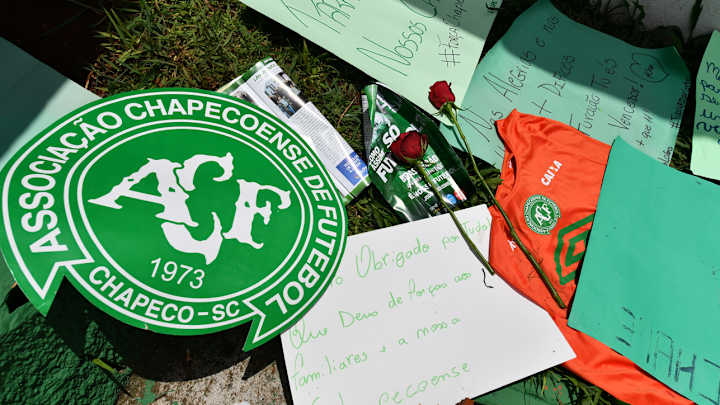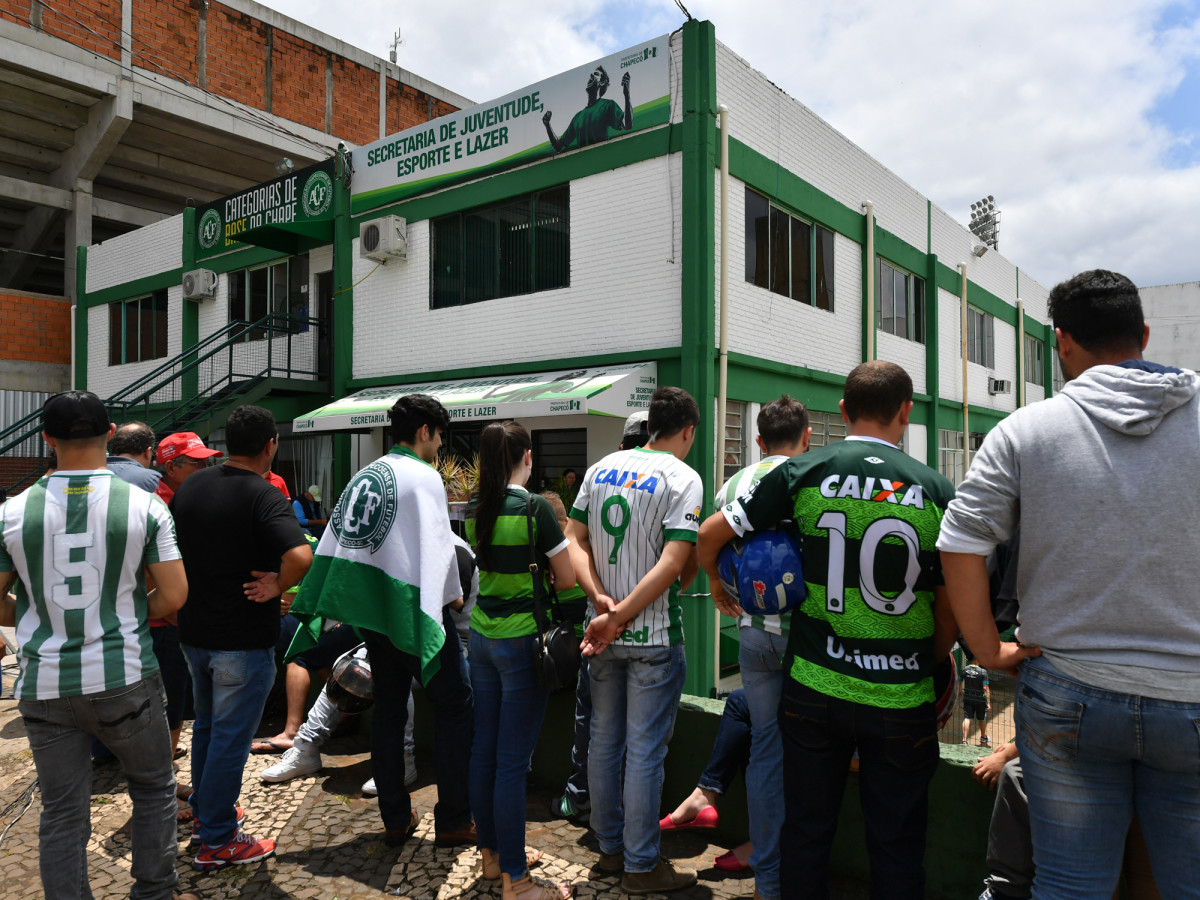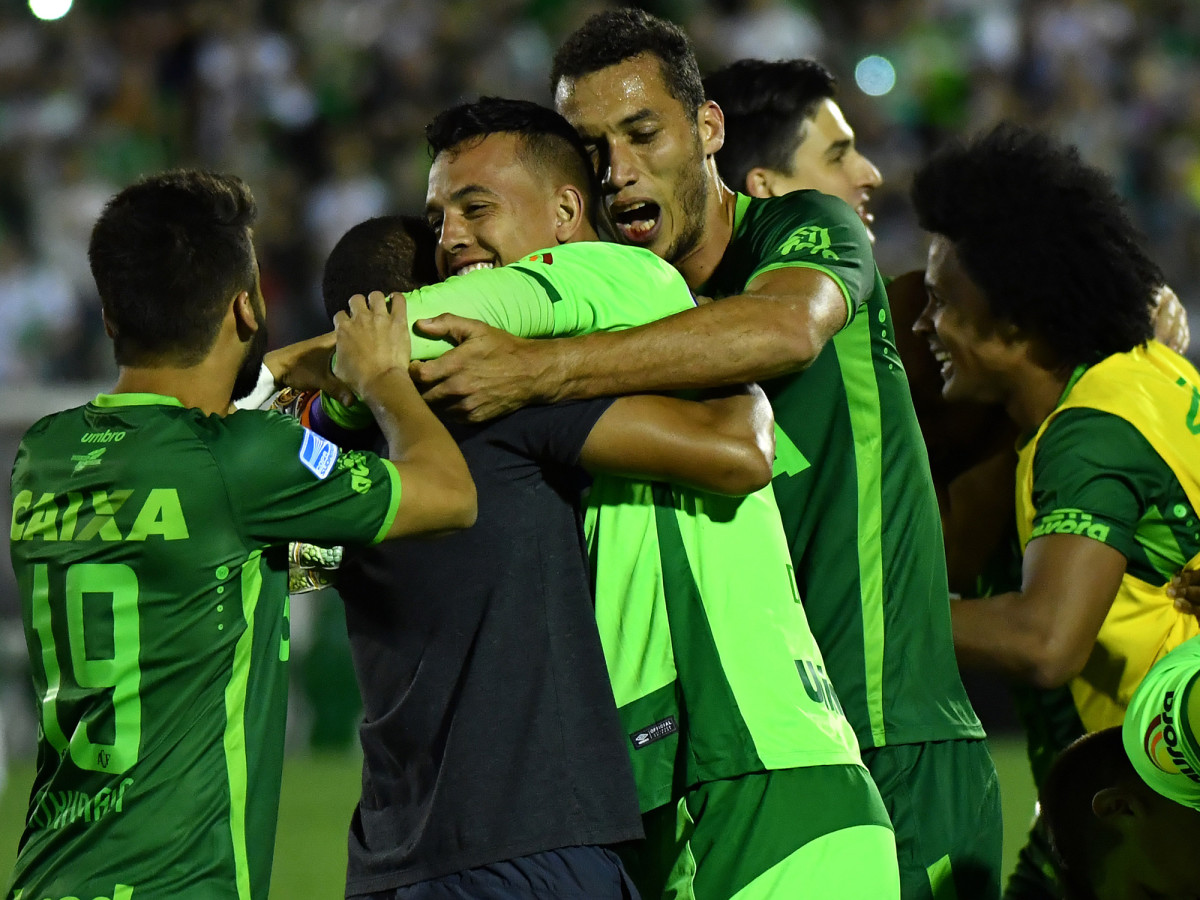Tragedy strikes Chapecoense amid rising club's greatest achievement

Chapecoense’s players were on their way to play the biggest game in the club’s history when their flight went down on the approach to Medellin, killing 71 of the 77 people on board. The club's rise had been an extraordinary one, from the fourth level of Brazilian football to the final of the Copa Sudamericana in just eight years. But that game, against Atletico Nacional, will never be played.
British Aerospace 146 charter flight was en route from Santa Cruz de la Sierra, Bolivia, with a request to fly direct from Brazil having been rejected by the Brazilian civilian aviation authority for reasons that remain unclear. It had been given priority to land when contact was lost with ground authorities at around midnight, according to Alfredo Bocanegra, the head of Colombia’s civil aviation authority.
Chapecoense on locker room celebration: ‘Let this be the last image of our warriors’
Two of the survivors are known to be players, Alan Ruschel and Jakson Follman, and two members of the flight crew also escaped. Goalkeeper Danilo was initially reported to have survived but subsequently died from his injuries. With the identity of the fifth survivor still unknown, that means at least 19 Chapecoense players and 21 journalists lost their lives and the club thus adds its name to the grim list of football teams wiped out in air disasters: Torino 1949, Manchester United 1958, Pakhtakor 1979, Alianza Lima 1987, Zambia 1993.
Chapecoense comes from Chapeco, a town of around 200,000 in the state of Santa Caterina in the south of Brazil. Fans gathered at the club’s stadium there, the Arena Conda, to await the latest news and pay tribute with flags and flowers.

“We’re gathered at the stadium, welcoming people who are affected, people who love Chapecoense,” club vice president Ivan Tozzo told SporTV. “The pain is hard to take. Chapecoense was the biggest source of happiness in the city. Many in the town are crying.”
An agonizing photograph showed three players who hadn’t traveled because of injury sitting in their numbered seats in an empty dressing room, desolate.
“I was saved because I was injured,” one of the three, winger Alejandro Martinuccio told Argentina’s Radio La Red. “I feel profound sadness… The only thing I can ask is prayers for my teammates who were on the flight.”
Desolación total en el vestuario de Chapecoense. Los jugadores que no hicieron el viaje, devastados. Qué jornada tan jodida. pic.twitter.com/acgTMar1oC
— Invictos (@InvictosSomos) November 29, 2016
A three-day period of mourning has been declared across Brazil, extended to 30 days in Chapeco with all schools closed and Christmas festivities canceled. CONMEBOL, South American football’s governing body, has placed all football on the continent on hold.
Chapecoense was founded in 1973 from the merger of two amateur teams. Although it won the Santa Caterina state championship in 1977, it was never able to establish itself among the elite and was relegated from the top flight in 1979. Further state titles followed in 1996, 2007 and 2011, but the club was always a minnow. Then, in 2009 it was promoted to Serie C. Three years later it went up to Serie B. A year after that it made it back to the top flight. Each season brought an improvement: 15th in 2014, 14th in 2015 and ninth this season with one game left to play.
Soccer players, teams pay tribute to victims of Chapecoense plane crash
But this year had been all about the Sudamericana. Chapecoense beat its compatriots Cuiaba to reach the last 16. It got by Argentine side Independiente, the most successful team in Libertadores history, on penalties after a pair of 0-0 draws. In the quarterfinal it beat Junior of Colombia.
In the semifinal, it faced another giant of Argentina, San Lorenzo. Martin Cauteruccio put the host side ahead in the first leg in Buenos Aires, but in the second half, winger Ananias Eloi turned on a left-wing cross from fullback Dener and squeezed in an away goal that proved decisive after a goalless draw back in Brazil.

Given Chapecoense draws an average crowd of 7,000, it was an astonishing achievement, one that coach Caio Junior compared to Leicester’s Premier League success last season. Caio was killed in the crash. His son forgot his passport, missed the flight and survived.
“I’ve been at Chapecoense a long time and I know what we’ve gone through to get here,” Tozzo said. “Now we’ve arrived here–I won’t say at our peak but known around the country–a tragedy like this happens.”
Atletico Nacional has asked CONMEBOL to declare Chapecoense as champion, a touching gesture but one that can’t begin to address the sense of pain or loss in the town.
